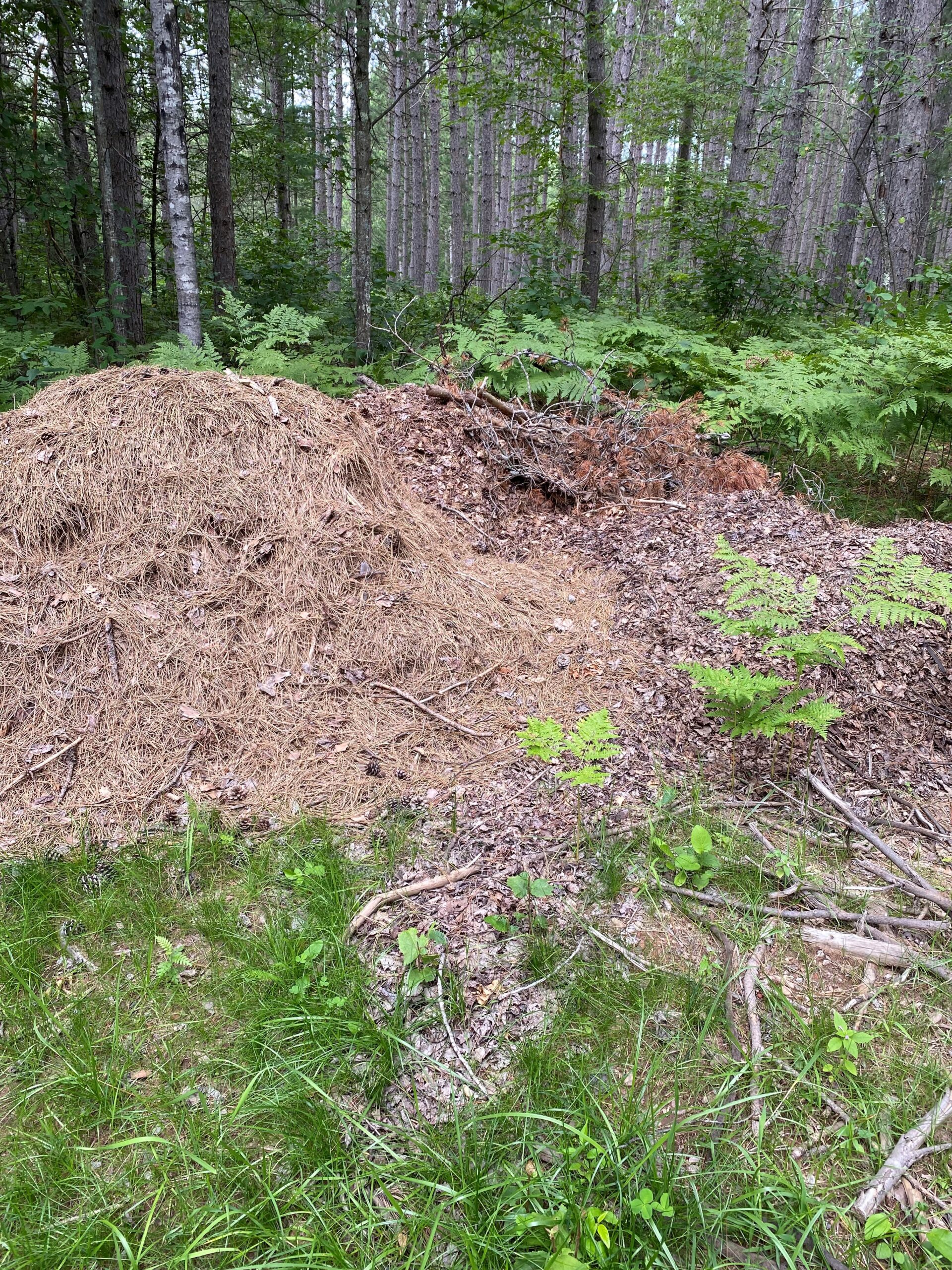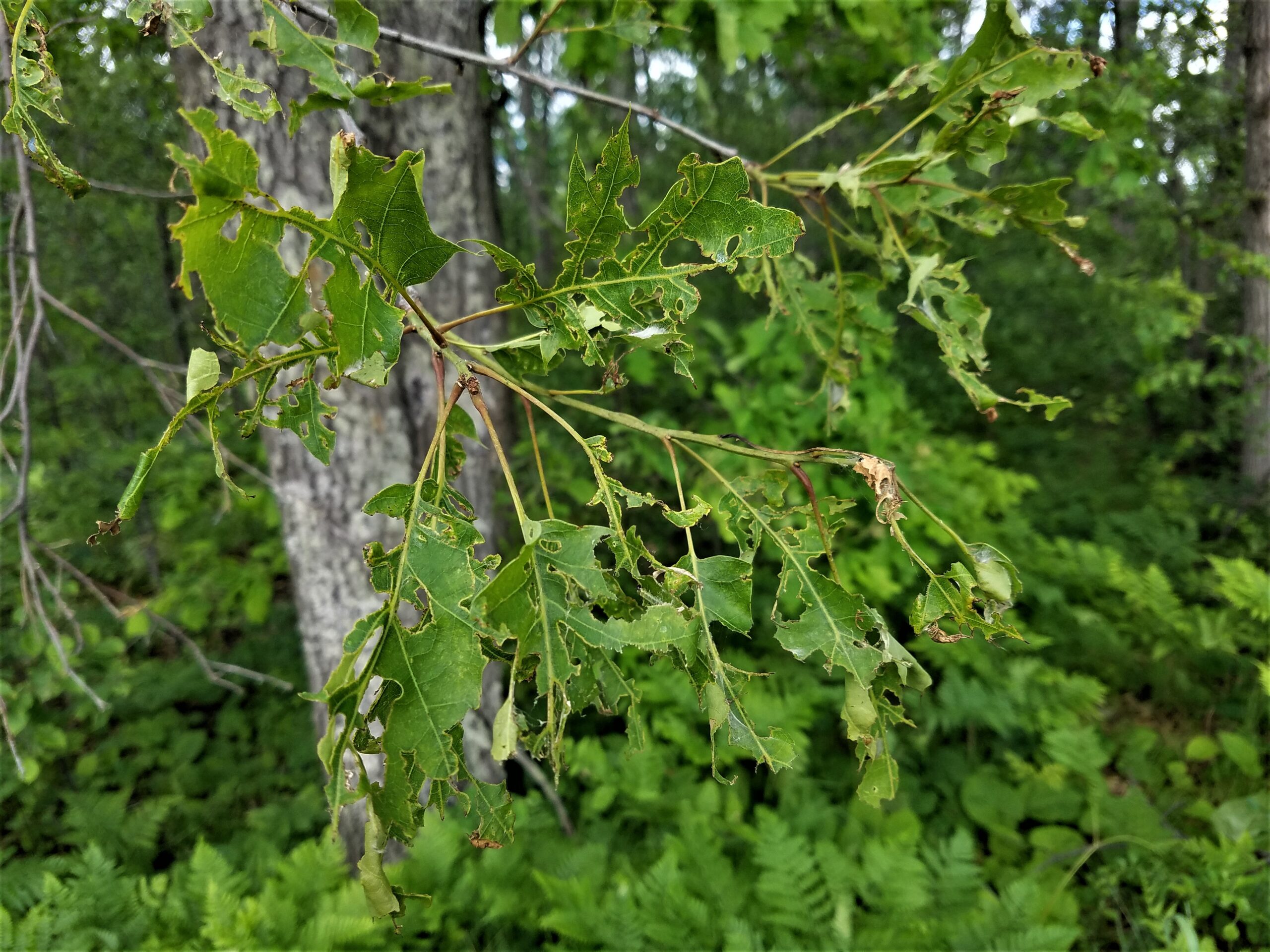By Bill McNee, DNR Forest Health Specialist, Oshkosh, bill.mcnee@wisconsin.gov or 920-360-0942

Early photo of EAB adults taken in June 2002, prior to the insect species being identified. Photo: USDA Animal and Plant Health Inspection Service
The beginning of July marked 20 years since we received news of an unidentified beetle that turned out to be the emerald ash borer (EAB), one of North America’s greatest tree killers. On July 1, 2002, DNR forest health staff received an email from USDA Animal and Plant Health Inspection Service about this beetle being associated with declining ash in southeast Michigan:
This is to notify you that in the past few days we have responded to a report of an insect pest feeding on ash in the western suburbs of Detroit. This follows what has been a series of reports of declining ash in this area over the past couple of years. However, in the past we have not been able to associate it with any particular insect or disease. We are now seeing a boring insect emerging from the infested trees in various sites… The adult, which is emerging now, resembles the shape and size of two lined chestnut borer. It is emerald, metallic green in color and leaves a D-shaped exit hole, similar to bronze birch borer… Continue reading “20 Year Anniversary Of Emerald Ash Borer Confirmation In North America” →



 You may have participated in this survey led by DNR Urban Forestry Coordinator Don Kissinger in 2020 (if so, thank you!) Wisconsin municipalities with more than 2,500 residents were asked a series of questions about the types of trees they prefer to plant (such as root stock type and caliper size), which lesser-used species they had successfully planted, which species they cannot find but would like to plant, and whether they use a gravel bed.
You may have participated in this survey led by DNR Urban Forestry Coordinator Don Kissinger in 2020 (if so, thank you!) Wisconsin municipalities with more than 2,500 residents were asked a series of questions about the types of trees they prefer to plant (such as root stock type and caliper size), which lesser-used species they had successfully planted, which species they cannot find but would like to plant, and whether they use a gravel bed.




